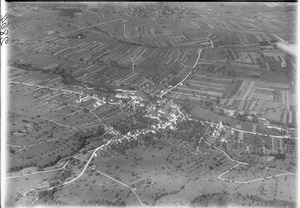Breitenbach, Switzerland facts for kids
Quick facts for kids
Breitenbach
|
||
|---|---|---|
|
||
| Country | Switzerland | |
| Canton | Solothurn | |
| District | Thierstein | |
| Area | ||
| • Total | 6.8 km2 (2.6 sq mi) | |
| Elevation | 392 m (1,286 ft) | |
| Population
(Dec 2020 )
|
||
| • Total | 3,979 | |
| • Density | 585/km2 (1,516/sq mi) | |
| Postal code |
4226
|
|
| Surrounded by | Brislach (BL), Büsserach, Fehren, Himmelried, Nunningen, Wahlen bei Laufen (BL), Zullwil | |
| Twin towns | Grossbreitenbach (Germany) | |
Breitenbach is a town in Switzerland. It's located in the canton of Solothurn, within the Thierstein district. The local dialect of German, called Schweizerdeutsch (Swiss-German), is quite similar to the dialect spoken in Basel.
You can reach Breitenbach by train, with stations nearby in Laufen and Zwingen. Like many places in Switzerland, there are also Postauto buses. These buses help people travel to nearby towns and connect to the train stations.
Contents
History of Breitenbach
Breitenbach was first mentioned in official records way back in 1152. At that time, it was known as Breitenbach.
Geography of Breitenbach
Breitenbach covers an area of about 6.8 square kilometers (about 2.6 square miles). A big part of this land, almost half (46.2%), is used for farming. Forests cover about 34.4% of the area, making it a green place.
About 19.4% of the land is developed with buildings and roads. A small part (0.3%) includes rivers or lakes. The town is the main center of the Thierstein district. It sits on the Passwang Pass road, which is a mountain pass.
Breitenbach's Coat of Arms
Every town has a special symbol called a coat of arms. Breitenbach's coat of arms has two main parts. On one side, it shows a green reed plant on a gold background. On the other side, it has a wavy silver stripe on a red background. This design is called Per pale Or a Reed Vert with two leaves and Gules a Fess wavy Argent.
People and Population
Breitenbach has a population of around 3,800 people. About 23% of the people living here are from other countries. Over the last ten years, the population has grown by about 11%.
Most people in Breitenbach (about 82.6%) speak German. Italian is the second most common language (4.2%), followed by Portuguese (2.8%). A small number of people also speak French or Romansh.
In 2000, about 28.6% of the people living in Breitenbach were born there. Many others were born elsewhere in Switzerland or outside the country.
The population of Breitenbach has changed over time, as you can see in the chart below:

Economy and Jobs
In Breitenbach, many people have jobs in different areas. Some work in the primary sector, which means they work in farming or forestry. Others work in the secondary sector, which includes factories and construction. A large number of people work in the tertiary sector, which involves services like sales, transportation, hotels, education, and healthcare.
Many people travel into Breitenbach for work, more than those who leave to work elsewhere. About 18.7% of workers use public transportation, while 51.3% drive their own cars to work.
Religion in Breitenbach
According to a survey in 2000, most people in Breitenbach (63.4%) are Roman Catholic. About 12.3% belong to the Swiss Reformed Church. There are also smaller groups of people who are Orthodox Christians or belong to other Christian churches.
Some residents are Islamic (3.74%), and a few are Buddhist or Hindu. About 11.72% of the population do not belong to any church.
Education and Learning
Breitenbach has a good education system. Many adults have finished high school, and some have gone on to college or other higher education.
During the 2010-2011 school year, there were 283 students in Breitenbach's schools. Children can attend two years of non-required Kindergarten. After that, they go to six years of primary school. For middle school (lower secondary school), students from Breitenbach go to a school in a nearby town.
Breitenbach also has a library called Bibliothek Breitenbach. In 2008, it had almost 10,000 books and other media. It loaned out over 38,000 items that year, showing how popular it is!
Images for kids
See also
 In Spanish: Breitenbach (Soleura) para niños
In Spanish: Breitenbach (Soleura) para niños







